Introduction: A Whisper in the Dark

Imagine walking home alone at night through the quiet streets of suburban Japan. The wind is cold, streetlights flicker softly, and an unsettling silence fills the air. Suddenly, you see her—a woman standing beneath a lamp post. Her face is partially hidden by a surgical mask, common enough in Japan to not raise suspicion. She approaches slowly, quietly asking, “Am I pretty?”
Your answer may determine your fate.
Historical Roots: The Birth of a Nightmare
The chilling figure known as Kuchisake-onna, or the Slit-Mouthed Woman, has haunted Japan’s folklore far longer than her modern popularity suggests. While the current legend rose dramatically in the late 1970s, her origins trace back to ancient Japanese folklore, intertwined with tales of vengeful spirits or onryō.
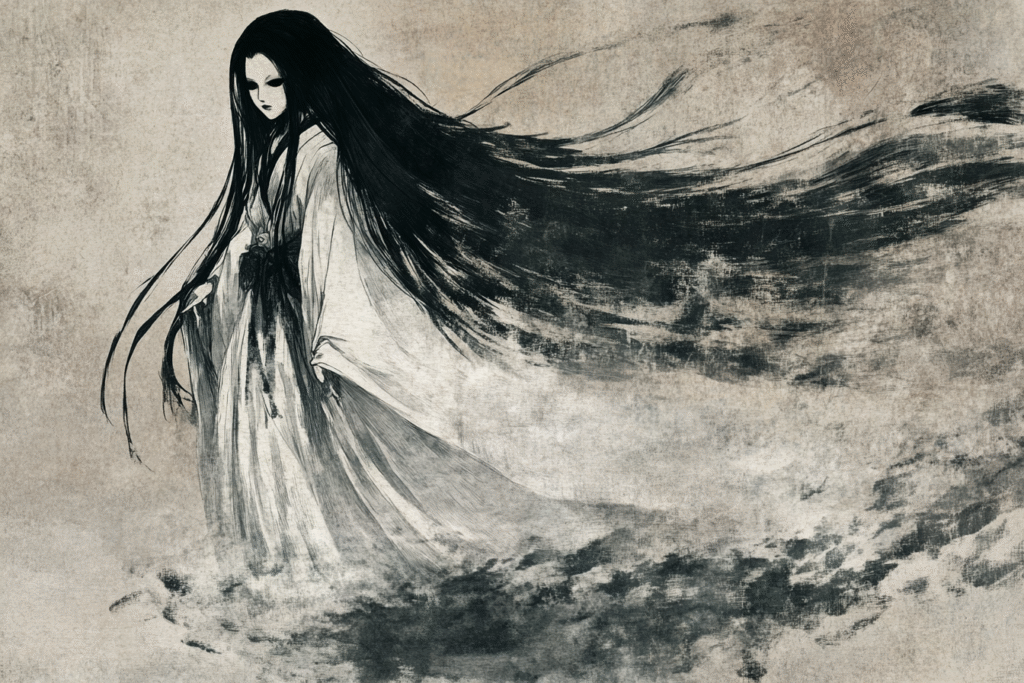
In many early accounts, Kuchisake-onna was depicted as a tragically beautiful woman, horribly mutilated—often by a jealous husband or violent attacker—leaving her face grotesquely scarred from ear to ear. She returned as an onryō, bound by her rage and sorrow, wandering forever in search of victims to share her pain. Edo-period illustrations and accounts even depicted her as a shapeshifting kitsune (fox spirit), suggesting a deeply rooted tradition of supernatural entities assuming human form to exact revenge or cause mischief.
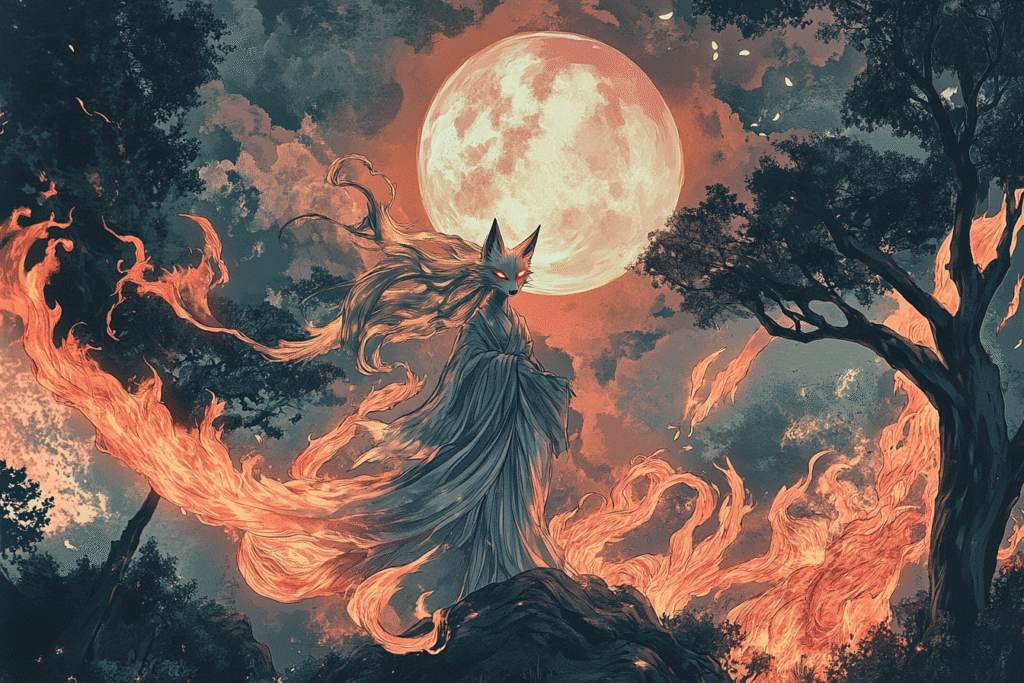
Stories from Japan’s Heian period (794–1185) and Edo period (1603–1868) also contain echoes of vengeful spirits similar to Kuchisake-onna, reflecting societal anxieties around infidelity, domestic violence, and betrayal. These early narratives served as morality tales, stark warnings about the repercussions of violence and jealousy, and laid the groundwork for her modern reincarnation.
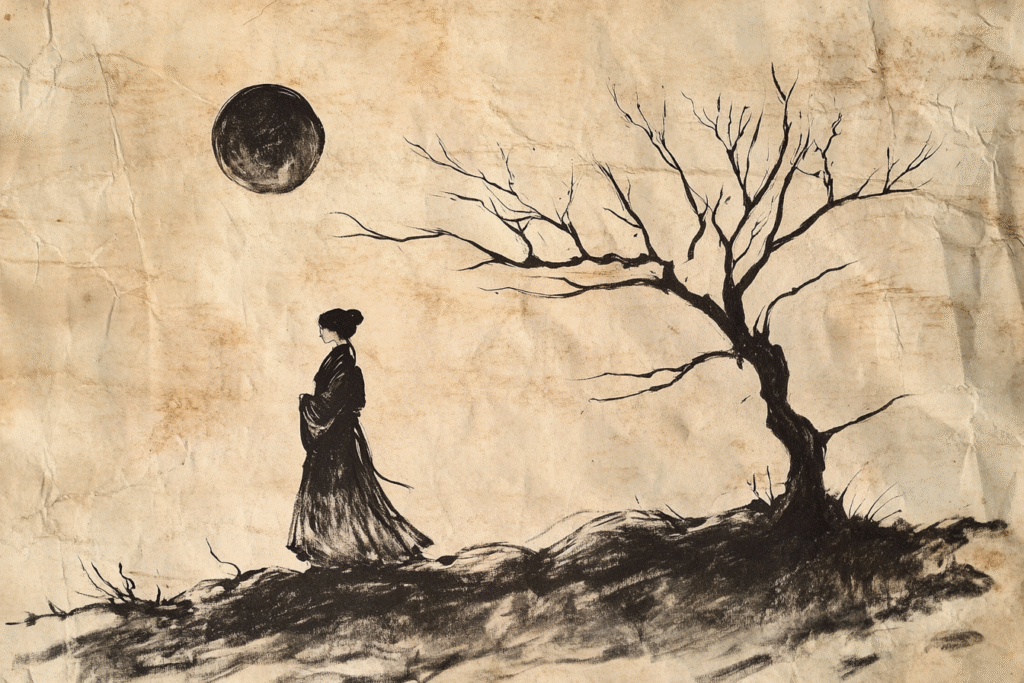
Panic and Fear: The 1970s Epidemic
In 1978, Japan was gripped by mass hysteria surrounding alleged sightings of Kuchisake-onna. It began in Gifu Prefecture, quickly escalating into a nationwide phenomenon. Children reported encounters with a mysterious woman who appeared near schools, wearing a trench coat and surgical mask. She would confront them, quietly asking, “Am I pretty?” before revealing her horrific mutilation.
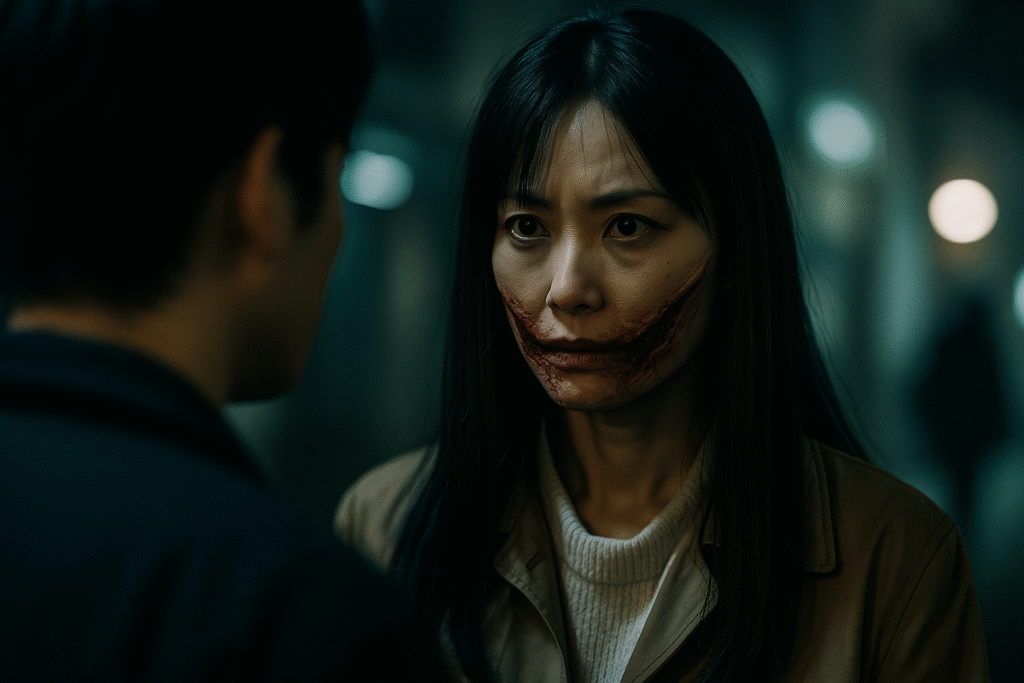
The media rapidly amplified these reports, fueling public fear and paranoia. Schools implemented strict curfews, teachers escorted students home, and local police increased patrols significantly. Panic reached its height in 1979 when various newspapers published sensational articles and eyewitness accounts, creating a climate of widespread anxiety.
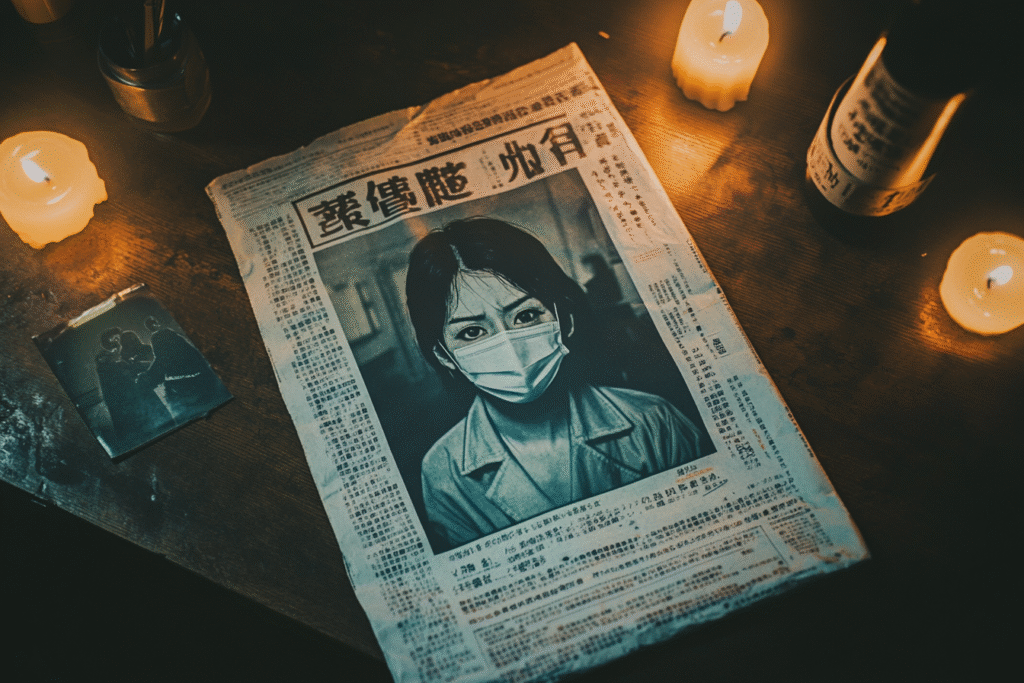
Rumors varied widely: some claimed she killed her victims outright, while others said she inflicted similar mutilations, forcing survivors to live with the same ghastly disfigurement. Communities held emergency meetings, and some schools even temporarily closed as fear paralyzed everyday life. Eventually, the hysteria subsided, leaving behind a powerful legacy that blurred the lines between urban myth and reality.
Regional Variations: Japan’s Diverse Folklore
One of the most intriguing aspects of Kuchisake-onna is the variety of regional adaptations across Japan. Local versions often incorporated distinct elements reflective of their cultural context. For instance, in some regions, she wielded large scissors, symbolic of domestic terror. Elsewhere, she was said to carry a sickle or kitchen knife, instruments reflecting local rural life.
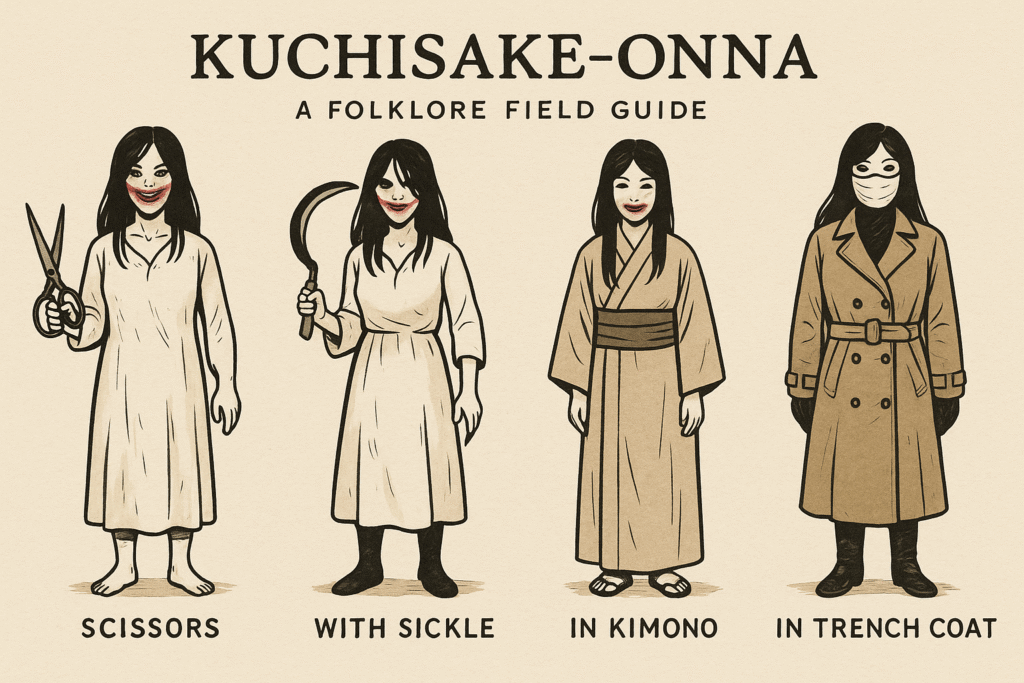
Methods of escape also varied dramatically. In certain areas, children learned to distract Kuchisake-onna by tossing hard candy or coins, exploiting a supposed compulsion to pick up scattered objects. Other communities advocated for specific phrases or behaviors, such as repeatedly saying “pomade,” which supposedly irritated or confused her—this particular detail emerged from an obscure local tale involving a barber’s wife.
In urban versions of the legend, Kuchisake-onna was commonly dressed in contemporary clothing—a trench coat and surgical mask—whereas rural versions depicted her in traditional attire, reinforcing the adaptability of the legend across diverse settings.
Crossing Borders: Kuchisake-onna in Global Digital Folklore
With the rise of the internet, Kuchisake-onna transformed from a strictly Japanese legend into a global horror phenomenon. Her story resonated deeply in South Korea, where she became known as the “Red Mask Woman.” This Korean adaptation incorporated unique local anxieties, such as fears around botched plastic surgeries, reflecting the country’s intense beauty standards.
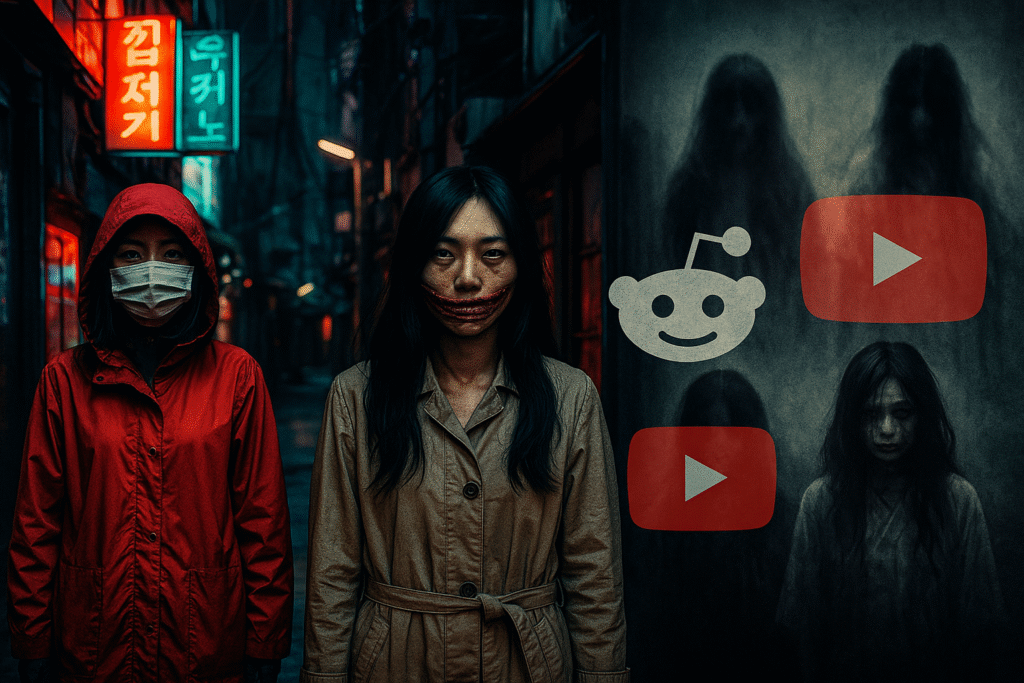
Korean versions suggested specific ways to evade her, including zigzagging or turning sharp corners, exploiting local beliefs about spirits only traveling in straight lines. In China and Taiwan, online communities adapted her legend further, intertwining it with local ghost stories and urban legends, sometimes involving protective talismans or rituals.
Western internet culture eagerly embraced Kuchisake-onna through creepypastas, YouTube horror narrations, and viral social media content. English-language forums frequently drew parallels with similar Western legends like Bloody Mary and La Llorona, demonstrating universal anxieties reflected in such ghostly figures. Kuchisake-onna’s online presence continues to evolve, captivating new audiences worldwide.
Psychological Interpretations: A Mirror to Society
Why has Kuchisake-onna resonated so strongly and persistently across time and cultures? Scholars and folklorists suggest she embodies deep-rooted societal anxieties about beauty, gender roles, and conformity. Her disturbing question, “Am I pretty?” encapsulates society’s conflicting pressures on women, especially regarding appearance and societal acceptance.

The surgical mask, originally symbolizing hygiene, also serves as a metaphorical barrier—hiding vulnerability, disfigurement, or societal rejection. Through Kuchisake-onna, modern anxieties about identity, physical perfection, and hidden aggression are vividly expressed, making her story both timeless and deeply contemporary.
Kuchisake-onna in Popular Culture
The enduring appeal of Kuchisake-onna is reflected vividly in popular culture. Films like “Carved: The Slit-Mouthed Woman” introduced her legend to international audiences, exploring deeper psychological elements and expanding her narrative through sequels and adaptations.
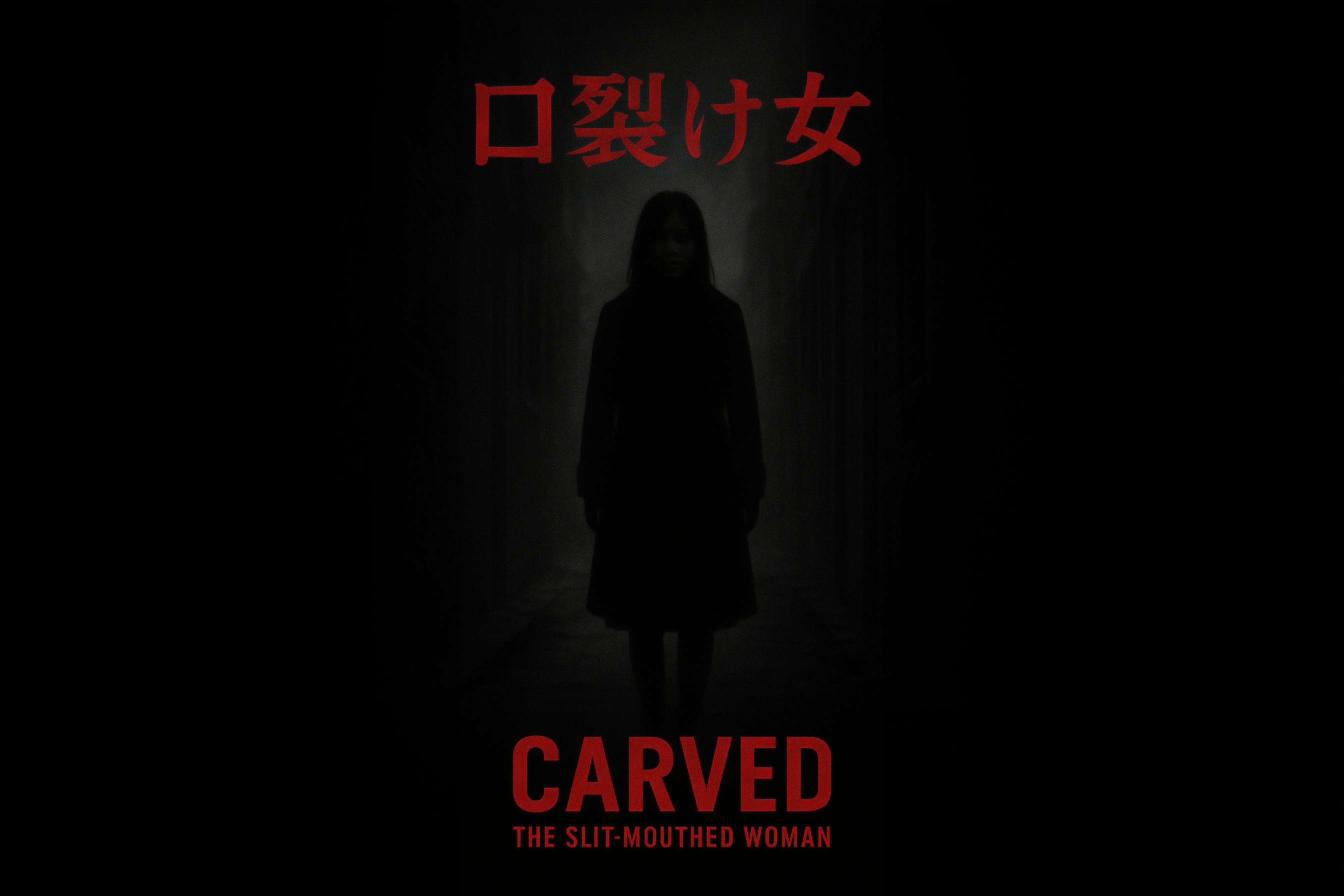
In the manga world, artists such as Kanako Inuki brought unique psychological depth, while anime series like “Mob Psycho 100” and “Jujutsu Kaisen” featured characters directly inspired by the Slit-Mouthed Woman. Video games further cemented her legacy, notably in horror games such as “Ghostwire: Tokyo,” where players experience direct confrontations with this legendary figure.
Modern Encounters and Online Urban Legends
Today, countless online forums and social media platforms continue to share supposed real-life encounters with Kuchisake-onna, adding fresh energy to the legend. Paranormal enthusiasts and urban explorers regularly seek out locations reputedly linked to her sightings, sharing their experiences through videos, podcasts, and blogs. These contemporary stories maintain her relevance and ensure her place within modern digital folklore.
Academic Perspectives: Understanding Kuchisake-onna
Academic analyses provide rich insights into Kuchisake-onna’s significance. Folklorist Michael Dylan Foster explores the legend’s spread through media and women’s magazines, highlighting its reflection of societal fears and anxieties. Kathryn Hemmann’s work examines horror films portraying Kuchisake-onna, interpreting her as a symbol of societal anxieties around femininity, motherhood, and beauty standards.
These scholarly perspectives demonstrate how Kuchisake-onna transcends mere horror stories, revealing profound insights into cultural psychology, social fears, and gender dynamics. Such analyses underscore the depth and complexity embedded within her haunting narrative.
Conclusion: Why She Still Haunts Us
Kuchisake-onna’s enduring power lies in her ability to embody fundamental human fears—beauty, betrayal, hidden dangers, and societal pressures. Whether she is a figment of collective imagination or a lingering presence just beyond perception, her whispered question continues to echo:
“Am I pretty…?”
Have you encountered legends similar to Kuchisake-onna? Share your experiences or thoughts below—and remember, be careful how you answer when someone quietly asks you an innocent-sounding question in the darkness.
Sources & Further Reading
Wikipedia – “Kuchisake-onna (Slit-Mouthed Woman)”
https://en.wikipedia.org/wiki/Kuchisake-onna
Foster, Michael Dylan. Pandemonium and Parade: Japanese Monsters and the Culture of Yōkai. University of California Press, 2009.
https://www.ucpress.edu/book/9780520253628/pandemonium-and-parade
